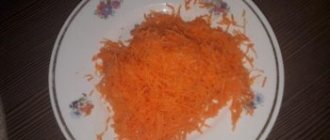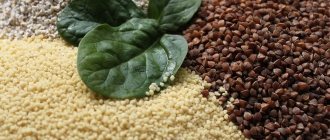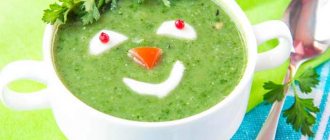What fruits to give to children
First of all, let us remind you that it is better to give children fruits in season. There will be no benefit from imported strawberries in winter, but there is a risk of poisoning from any chemicals. Also, do not choose fruits that look like they came off the covers of glossy magazines. Waxed ones are also not useful. Choose ordinary, but cute ones, preferably ours, not imported ones, preferably from your own plot.
- Alternate fruits, try to diversify your baby's diet. Give preference to fresh, and not in the form of compote, jam, etc.
- Remember that the peel is a place where all sorts of useful things accumulate, so do not cut off the peel of a fresh fruit, but simply wash it well. Only for a very young child who cannot chew, cut off the peel.
- If the child does not want to eat fruit separately, make a fruit salad in a beautiful bowl. Top with sour cream or natural yoghurt. Let the baby eat to his health.
Oranges
The most beloved citrus fruits by the Russian people come from Latin America and the Mediterranean. One of the most popular varieties of oranges is called “Navel”, which means “navel” in English. The fruits of this variety have a thick, but easily detachable peel, and at the top there is a small round process similar to a navel. In reality, this process is an underdeveloped second fruit. It is believed that the larger it is, the sweeter the orange.
Sicilian oranges are no less popular. Their peel and pulp have an unusual color, mostly red and brown. For this feature, Sicilian oranges are popularly nicknamed “blood oranges.”
Benefit
Oranges, like pineapples, are rich in potassium, phosphorus, magnesium, calcium and vitamin B. Oranges are also record holders for vitamin C content.
Oranges (and orange juice) can be given to children, but do not forget to be careful - these citrus fruits are quite allergenic, and the acids they contain can cause irritation of the mucous membranes and lead to gastritis.
Women during pregnancy can also eat oranges, but in small quantities and not daily. In small doses, oranges have a positive effect on intestinal motility and help avoid constipation, which often accompanies pregnancy.
After eating oranges (and other citrus fruits), it is recommended to rinse your mouth thoroughly. This simple action will help protect tooth enamel from destruction.
The benefits of fruits for children
- Apricots contain calcium, iron, vitamins A and C, zinc and folic acid, there is a lot of carotene, potassium and fiber.
- Oranges, lemons and grapefruits are rich in vitamin C, but they are not recommended for young children due to the high risk of allergic reactions.
- Tangerines are inferior in the amount of vitamin C and folic acid, but are ahead in vitamin A and carotenoids. Well, they are easier to clean, and this is more convenient.
- Banana is juicy and sweet, it is usually introduced to children in their first year of life (given on its own and added to cottage cheese), it is rich in potassium.
- Grapes contain anthocyanin, which helps prevent cancer. Young children are not given grapes (fermentation is possible).
- Pears contain a lot of sorbitol and fiber; children love pears for their sweetness and unusual taste.
- Plums are rich in pectin, carotenoids, and vitamin C. If your baby has problems with bowel movements, offer him plums.
- Persimmon contains fiber, carotenoids and vitamin A. However, some varieties of this fruit also contain vitamin C.
- Apples are the most popular fruit. We eat them most often and for good reason. Thus, regular consumption of apples helps to normalize the functioning of the digestive system. Apples contain a lot of vitamins A, B and C.
We first introduce small children to green varieties of apples to avoid allergies. Apples also contain a lot of iron and potassium.
Fruits for children are an irreplaceable thing. Hard fruits are also very useful to chew; they strengthen teeth and gums. Now you know the benefits of fruits for children and what fruits to give to children. So make sure they are on the children's table.
Fruits on the baby menu
Fragrant fruits are not only a tasty treat, but also contain useful vitamins and microelements. As the baby grows, parents must include fruits in his daily diet. It would seem that food products we are all familiar with should not raise questions about how to consume them. But this is absolutely unfamiliar food for a baby! Therefore, it is worth asking your pediatrician in advance at what age you can give these gifts to your baby, how to introduce fruit complementary foods according to all the rules, and what comes first - puree or juice.
Juice or puree?
According to the recommendations of the World Health Organization, an infant is given fruit puree first, and then, after some time, juice.
Fruit puree has a fairly liquid consistency, but it is significantly thicker than milk or formula, which helps gradually accustom the baby to switch to full-fledged “adult” food in the future. After all, thanks to fruit puree, the baby quietly develops such necessary skills as chewing and swallowing food with a denser consistency than milk.
In addition, if the mother feeds the baby with ready-made industrial puree, then the rice starch, which is contained in jars of fruit, also has an enveloping effect, which has a beneficial effect on the immature digestive tract of the small child.
Complementary feeding rules
Currently, it is recommended to introduce vegetable puree as the first complementary food, followed by porridge. However, the traditional order of these two complementary foods may change in some cases.
In cases where children are having trouble gaining weight, the pediatrician may advise first introducing them to a more filling porridge, which is good for weight gain.
But fruit puree, in any case, is the “third echelon” and therefore appears in a child’s diet later than cereals and vegetables: for breastfed babies - closer to 7 months, and for artificial babies - at about 6 months of age.
Like any other complementary food, fruit puree is introduced against the background of the toddler’s full health. In other words, if the child does not sneeze or cough, his skin is clean, and his stool is regular and formed, then he can safely begin to get acquainted with new food!
It is recommended to introduce the toddler to fruit puree gradually - from half a teaspoon, and then, in about 5-7 days, increase the volume of puree to 60-80 g in 7-8 months.
And don’t forget that nutritionists strongly recommend giving your baby any new product in the morning. In this case, you will have the whole day to observe the baby’s reaction - whether there is any loosening of the stool, reddened cheeks or a rash on the body. If everything is calm, the next day you can slightly increase the amount of fruit puree.
Of course, as the first fruit complementary food, monocomponent purees are introduced, that is, purees consisting of one fruit.
They usually start with an apple. This is followed by apricot or pear, followed by banana, blueberry and other fruits.
Remember that a new puree can only be introduced when the body has already fully adapted to the previous product.
During our childhood, it was customary to make fruit juice as the first complementary food product, and it was recommended quite early - already at 3 months! But nutritionists have now proven that this is not worth doing for a number of reasons:
- there is a high probability of developing allergic reactions in the baby
- juice at an early age is a serious burden on the gastrointestinal tract and can cause disruption of the pancreas;
- Exposing your baby to fruit juices too early can disrupt digestion and cause diarrhea.
- Sugars contained in some industrially produced juices contribute to the development of caries even at a very early age.
Flavored juices
Now it is recommended to start introducing juices only after the little one gets acquainted with fruit puree, as well as cottage cheese and meat.
Remember that you should not rush to expand your diet! For a child under one year old, juices are not a vital food for health, but only a stimulation of enzymatic activity, that is, their benefits are mainly only for digestion.
Just like fruit puree, juices are introduced gradually and very carefully. We start with half a teaspoon in the morning.
If there is no rash or abnormal bowel movements, the next day the portion of the product can be slightly increased. And so gradually bring it up to the age norm.
It is recommended to partially dilute the juice with water. This measure will reduce its concentration and reduce the unwanted irritating effect on the mucous membrane of the baby’s gastrointestinal tract.
Juices are clarified and with pulp. There is also a gradation according to the number of ingredients: monojuices, that is, juices from one type of fruit, and combined ones, which include several types of fruits and berries.
- Apple juice stimulates gastric secretion and increases appetite. But remember that at first a small child should be given juice only from green varieties of apples. Of course, red, rosy apples look very appetizing, but the thing is that they can cause allergic reactions.
- Pear juice is truly a real storehouse of folic acid, which plays an irreplaceable role in the processes of hematopoiesis and the functioning of the nervous system. Pear juice also contains a large amount of valuable vitamins and microelements.
- Carrot-apricot juice is rich in fiber, which is known to actively stimulate intestinal motility. This is why carrot-apricot juice helps relieve constipation. The pectin in its composition promotes the growth of beneficial intestinal microflora, and dietary fiber stimulates the secretion of bile and reduces cholesterol levels. Both carrots and apricots contain valuable beta-carotene, which is converted into vitamin A in the child’s body. This is a reliable protector and helper for children’s eyes.
What juices should babies not eat?
Don’t rush to introduce some juices into your baby’s diet:
- Strawberry, raspberry and orange juices are not recommended for children under one year old due to the fact that they have a very high degree of allergenicity.
- Tomato juice puts too much stress on the pancreas.
- Peach juice has a pronounced laxative effect, so it is not recommended for unstable stools.
- Grape juice is not recommended for children under 4 years of age due to the high sugar content, which enhances fermentation processes in the intestines and, as a result, causes bloating.
In the meantime, there is no juice in the child’s diet, you can completely replace it with sugar-free compote made from fresh apples, pears, apricots and other aromatic fruits.
Nutritionists recommend cooking this compote for only 10 minutes, and then it should be infused for two to three hours in a cool place.
When preparing fruit desserts according to children's recipes (as a rule, these are jelly and mousses), it is more advisable to use freshly squeezed juice, made immediately before use.
Some types of fruit purees contain a large amount of fiber, which plays an important role in the digestion process and regulates bowel movements well, so they can be used to combat constipation in infants.
Fruit puree
Fruit puree is a real treasure trove of vitamins and microelements that are good for your baby’s health. Moreover, each fruit has its own “individual” beneficial properties.
- Apple. Puree from green apple varieties is rich in pectin, therefore it is considered a reliable assistant in the fight against constipation, which is often found in infants.
- Pear. This puree, on the contrary, can have a strengthening effect, so it is recommended for children who suffer from loose stools.
- Banana. The puree is rich in magnesium and potassium, which are necessary for the normal functioning of a child’s heart. Give banana puree from a jar, rather than prepared in a blender, as it is more liquid, that is, it is most suitable for the baby.
- Prunes. The puree is rich in potassium and B vitamins. Prunes enhance intestinal motility and have a laxative effect.
- Blueberry. The puree contains an important substance - tannin. It has a disinfectant and anti-inflammatory effect, so blueberry puree is recommended for inflammatory bowel diseases. Blueberries are also good for the eyes and blood.
- Apricot. Puree enriches the body with carotene and vitamin C.
- Assorted. After you have consistently introduced all the main fruits to your baby, it will be the turn of combined fruit purees: fruit and berry purees, fruit and grain purees (with oatmeal or rice flour), fruit and milk purees, with the addition of yogurt or milk.
You can begin introducing a new type of fruit puree only when the baby’s body has fully adapted to the previous product.
Grenades
The bright red fruits of the pomegranate tree grow primarily in Middle Eastern countries, as well as in Greece, Spain, Italy and some Caucasian countries. Pomegranates are large berries with juicy seeds inside.
When buying pomegranates, you should pay attention to their peel. It should be a little dry. Depending on the variety, the color of ripe pomegranate varies from pale orange to burgundy.
Benefit
Pomegranate fruits contain vitamins PP, B and C, and are also rich in microelements: iron, iodine, magnesium, potassium and phosphorus. Pomegranates are excellent at raising hemoglobin, so consuming them during pregnancy will help avoid problems associated with anemia.
Pomegranates have a beneficial effect on the nervous system, help fight gum disease and increase appetite.
It is not recommended to give grenades to children under two or three years of age to try. It is best to start getting acquainted with these fruits with juice diluted with water; for the first time, a small spoon will be enough. If the child is not allergic the next day, then you can move directly to grains.
Do not forget - pomegranates have a fixing effect, so they are not advisable for people prone to constipation.
Tangerines
Tangerines in Russia are closely associated with New Year celebrations. Small orange citrus fruits come to us from Spain, Morocco, China, Turkey and Egypt. In winter, on store shelves you can find tangerines originally from Azerbaijan and Abkhazia - they may not be as sweet as their overseas comrades, but, of course, very fragrant.
Tangerines are similar in appearance to clementines (hybrids of tangerines and oranges), so people often confuse them. Externally, these citrus fruits differ only in shape: clementines are more rounded, while tangerines are usually slightly flattened. If we talk about differences in taste, then clementines, as a rule, are much sweeter than tangerines.
Benefit
Tangerines are primarily vitamins A, B, C, K and many useful microelements, such as potassium, calcium, magnesium, phosphorus and sodium.
Tangerines have a positive effect on digestion and appetite. But despite this, it is impossible to get fat from them, of course, unless you snack on them with high-calorie buns.
For pregnant women, tangerines are useful for constipation, but children should not consume them in large quantities, as allergies may occur.
Persimmon
Bright orange fruits appear in our stores in late October or early November. Persimmons are imported into our country from the Caucasus, as well as from Israel, Spain and China. Only fully ripened fruits are suitable for consumption, otherwise they will taste very viscous.
When buying persimmons, you should give preference to softer fruits with brown leaves. If the persimmon is hard and its leaves are green, then it is clearly unripe.
Benefit
Persimmons are dominated by vitamins A, C and E, as well as beneficial microelements: iron, magnesium, phosphorus, potassium and iodine.
When consuming persimmons, it is important to be careful and remember two important things. First, these fruits are very sweet; the calorie content of certain varieties of persimmon can exceed 100 kcal per 100 grams, despite the average weight of the fruit being 250-300 grams.
And secondly, persimmons contain fibers with tannins (they protect the fruits from diseases and it is due to them that persimmons have a memorable astringent taste). Our stomach cannot digest such fibers, therefore, with large consumption of persimmon fruits (especially unripe ones), a bezoar is formed inside it - a dense foreign body that is not digested and is difficult to remove from the body or is not excreted on its own at all, then it is removed from the body through surgery.
To avoid problems, it is not recommended to consume persimmon in large quantities (more than one or two fruits per day). This is especially true for people with impaired intestinal motility, suffering from constipation and bloating. Since these symptoms occur quite often during pregnancy, you should be careful when consuming persimmons.
In moderation, persimmon can be offered to a child. This should be done no more than once a day and no more than one small fruit at a time (or half a large one).
Persimmons can be frozen and then the amount of tannins in it will decrease, but not everyone will like the overly soft consistency of the defrosted fruit.
Pitahaya
This bright exotic fruit is exported to Russia mainly from Asian countries such as China, Vietnam, Malaysia and Sri Lanka. In fact, pitahayas are the fruits of a cactus that grows in the subtropics. In our country, pitahaya fruits with pink-red peel are common, yellow ones are less common and they, as a rule, have a more pronounced sweet taste. The pitahaya pulp is white with a large content of small edible black seeds.
Benefit
Pitahaya fruits are watery and their pulp contains almost no calories. Pitahayas contain vitamins C and B and are also rich in phosphorus and potassium. They have a positive effect on the functioning of the stomach, intestines and cardiovascular system.
Due to the high risk of developing allergies, consumption of pitahaya fruits during pregnancy should be reduced to a minimum. The same applies to children - pitahaya can cause hives and stomach problems in children.
Figs
Figs are a representative of one of the ancient crops grown in the Mediterranean, Crimea and Krasnodar region. Fresh figs are stored for a very short time - approximately 7-10 hours, so they are usually consumed in dried form.
Benefit
Fresh and dried figs differ quite significantly from each other in the amount of beneficial microelements they contain. Vitamins C and B5 predominate in fresh fruits, and vitamins PP, B1, B2 and E in dried fruits. Figs also contain folic acid, magnesium, potassium, sodium, phosphorus and iron.
Figs are good for digestion. During pregnancy, eating figs helps prevent anemia. However, if the expectant mother notices a sharp jump in weight, then it is recommended to reduce the amount of dried figs consumed or give preference to lower-calorie fresh fruits.
Fig berries are also good for children. They have a good effect on children's digestion and gastric peristalsis.










